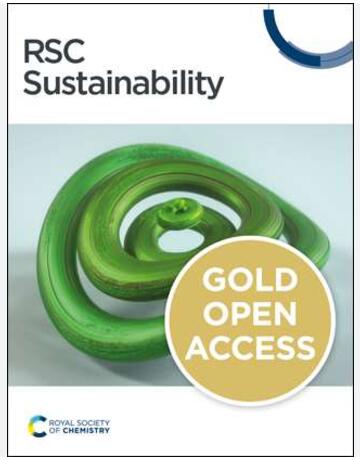圣多明各太阳辐射预测的集合学习算法:测量与评估
IF 3.3
3区 环境科学与生态学
Q2 ENVIRONMENTAL SCIENCES
引用次数: 0
摘要
太阳辐射是太阳能光伏(PV)技术的基本参数。可靠的太阳辐射预测对于太阳能光伏系统的设计、性能保证、运行效率、运行安全、电网调度和财务规划都非常重要。然而,高质量的地面太阳辐射测量数据非常稀缺,尤其是在非常短的时间跨度内。大多数现有研究都使用时间跨度为 1 小时或 1 天的数据集来训练机器学习(ML)模型,而使用时间跨度为 1 分钟的数据集的研究报告却寥寥无几。在这项研究中,对九种集合学习算法(ELAs)进行了综合评估,利用从当地气象站收集的 1 分钟时间跨度数据集估算圣多明各的太阳辐射。评估的集合学习模型包括七个同质集合:随机森林(RF)、额外树(ET)、自适应梯度提升(AGB)、梯度提升(GB)、极端梯度提升(XGB)、光梯度提升(LGBM)、基于直方图的梯度提升(HGB);以及两个异构集合:投票和堆叠。RF、ET、GB 和 HGB 被组合用于开发投票和堆叠集合,堆叠集合的第二层采用线性回归(LR)。六项技术指标,包括均方误差(MSE)、均方根误差(RMSE)、相对均方根误差(rRMSE)、平均绝对误差(MAE)、平均绝对百分比误差(MAPE)和决定系数(R2),被用作确定所开发的集合算法预测质量的标准。结果比较表明,在同质集合学习模型中,HGB 算法的预测性能更优,而总体而言,堆叠集合的准确性最好,其指标值为 MSE = 3218.27、RMSE = 56.73、rRMSE = 12.700、MAE = 29.87、MAPE = 10.60 和 R2 = 0.964。本文章由计算机程序翻译,如有差异,请以英文原文为准。
Ensemble Learning Algorithms for Solar Radiation Prediction in Santo Domingo: Measurements and Evaluation
Solar radiation is a fundamental parameter for solar photovoltaic (PV) technology. Reliable solar radiation prediction has become valuable for designing solar PV systems, guaranteeing their performance, operational efficiency, safety in operations, grid dispatchment, and financial planning. However, high quality ground-based solar radiation measurements are scarce, especially for very short-term time horizons. Most existing studies trained machine learning (ML) models using datasets with time horizons of 1 h or 1 day, whereas very few studies reported using a dataset with a 1 min time horizon. In this study, a comprehensive evaluation of nine ensemble learning algorithms (ELAs) was performed to estimate solar radiation in Santo Domingo with a 1 min time horizon dataset, collected from a local weather station. The ensemble learning models evaluated included seven homogeneous ensembles: Random Forest (RF), Extra Tree (ET), adaptive gradient boosting (AGB), gradient boosting (GB), extreme gradient boosting (XGB), light gradient boosting (LGBM), histogram-based gradient boosting (HGB); and two heterogeneous ensembles: voting and stacking. RF, ET, GB, and HGB were combined to develop voting and stacking ensembles, with linear regression (LR) being adopted in the second layer of the stacking ensemble. Six technical metrics, including mean squared error (MSE), root mean squared error (RMSE), relative root mean squared error (rRMSE), mean absolute error (MAE), mean absolute percentage error (MAPE), and coefficient of determination (R2), were used as criteria to determine the prediction quality of the developed ensemble algorithms. A comparison of the results indicates that the HGB algorithm offers superior prediction performance among the homogeneous ensemble learning models, while overall, the stacking ensemble provides the best accuracy, with metric values of MSE = 3218.27, RMSE = 56.73, rRMSE = 12.700, MAE = 29.87, MAPE = 10.60, and R2 = 0.964.
求助全文
通过发布文献求助,成功后即可免费获取论文全文。
去求助
来源期刊

Sustainability
ENVIRONMENTAL SCIENCES-ENVIRONMENTAL SCIENCES
CiteScore
6.80
自引率
20.50%
发文量
14120
审稿时长
17.72 days
期刊介绍:
Sustainability (ISSN 2071-1050) is an international and cross-disciplinary scholarly, open access journal of environmental, cultural, economic and social sustainability of human beings, which provides an advanced forum for studies related to sustainability and sustainable development. It publishes reviews, regular research papers, communications and short notes, and there is no restriction on the length of the papers. Our aim is to encourage scientists to publish their experimental and theoretical research relating to natural sciences, social sciences and humanities in as much detail as possible in order to promote scientific predictions and impact assessments of global change and development. Full experimental and methodical details must be provided so that the results can be reproduced.
 求助内容:
求助内容: 应助结果提醒方式:
应助结果提醒方式:


